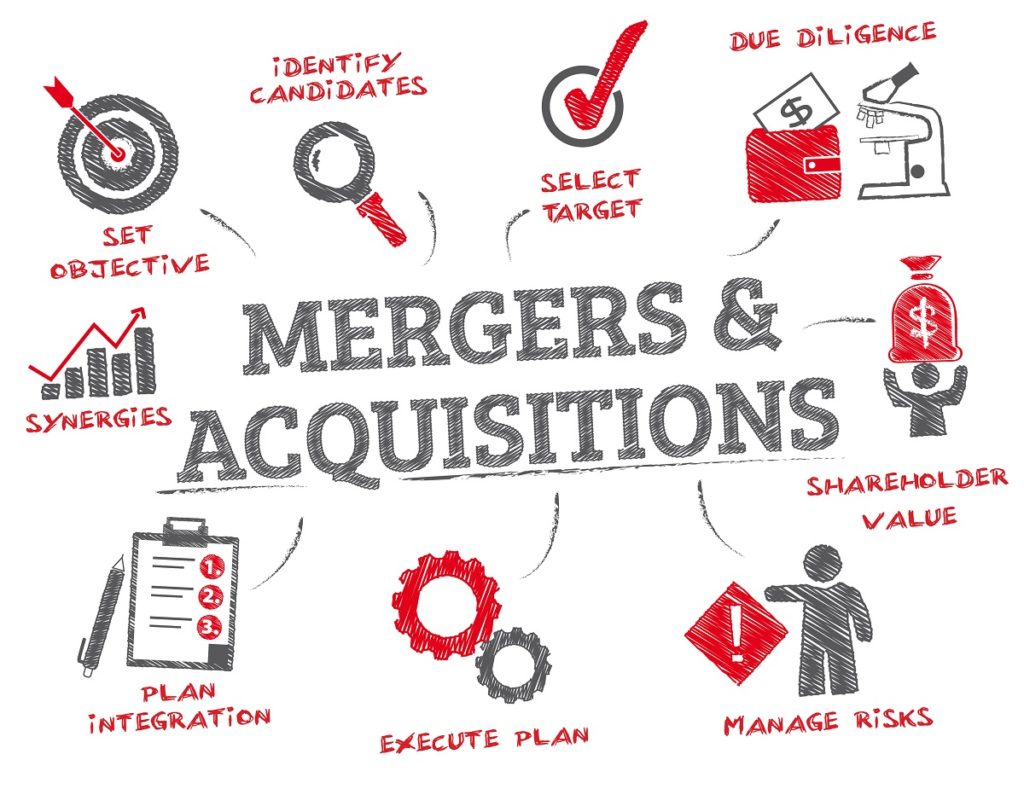The business world is filled with innumerable terms that unveil themselves according to need and various situations. Mergers and acquisitions are another set of misunderstood terms in the world of business that become the cause of confusion for many.
There are many more that can sound similar, or remind us of something else but have a completely different meaning in this niche.
Both these terms refer to the combining of two different organizations but there are some differences that set the two apart. They differ in the “situations” they are used in and in this piece of article, we will be discussing both these terms briefly.
But, you’ve already met both situations in your life, when two companies become one, and they are re-branding themselves, so they can be recognizable on the market. The other one also the pretty known situation is when a bigger company is buying a smaller one, but still lets them use their original name or logo.
One of the most recognizable examples is the acquisition of Facebook over Instagram. As you know, Instagram is still a standalone product, but now it’s owned by Facebook, and they share some similar features, but also can work as one app, especially in the messaging concept.
There are several companies like Redcap&Truss that manage your merger and acquisition processes for you. However, it is always best to have self-knowledge about what these terms are and when they are used. Let’s dig a bit deeper.
What is a Merger?

When two different organizations come together to craft a new company; a merger takes place. They usually come out with a completely new name, or set a deal to use one of the brands so they can still be recognizable, but adapt the other parts of the branding to the new situation.
What is Acquisition?

On the other hand, when one organization or entity takes over the other, it is referred to as an acquisition. This happens when a bigger company, business, or organization decides to buy or take over another entity, so they can become part of them.
Sometimes they let the acquiesced part still proceed with their usual work and offer the same products, or adapt to the new rules. Cosmetic brands are a great example of that since there are many brands owned by only a few giants.
Merger

In terms of business “legally”, a merger takes place only when two organizations combine together into a new one. The ownership and the management structure are also new.
What distinguishes the matter is whether the deal is being done in a friendly manner (i.e. merger) or in a hostile way (i.e. acquisition).
In a merger, no cash is required for completion. However, the two individual companies dilute their individual powers and come together as one, in the form of a new entity or organization.
However, if we look into the practical world of business, friendly mergers hardly take place now. It has become uncommon, due to the rising competition, that two companies would prefer coming together to benefiting from two different CEOs. In a merger, the stocks of both companies will be ended. The stocks are also issued again, under the new business entity.
So, it’s understandable why this approach is not that popular or attractive as it was before, but it doesn’t mean it’s not happening somewhere in the world. One of the most recognizable examples is when the freelance platforms Elance and oDesk merged together into a new entity that was first named Elance-oDesk, and then they rebranded into UpWork.
This is one of the most successful mergers in the last decade because they fused together their features, so the new platform can provide a better service for both freelancers and clients.
Mostly when a merger takes place, it happens to reduce the operational cost and expand the organization’s market. Also, for a merger to take place, the size and scope of the business have to be near equal to one another.
Acquisition

In an acquisition, no new entity or company does not come into formation. In this situation, the small organization is usually consumed and its assets are combined in the larger company. Acquisitions are also termed “takeovers” as they hold a negative place in the business world.
Moreover, an acquisition involves a huge amount of money and the power is in the buyer’s control only. To ensure that an acquisition takes place, the operational and management decisions are taken over the buyer’s company completely.
It might seem as if a company can never benefit from both these terms but it is quite the opposite. Many organizations flourish through mergers and acquisitions.
This can be helpful for a company that is underperforming and acquisition can save them from further loss. It can also help in assessing assets and for further and new development.
We already said that it’s a known practice in cosmetic and fashion brands and companies. The first example that pops to our mind is LVMH, which owns plenty of popular brands, including Dior, Givenchy, Kenzo, Celine, Bvlgari, and many others.
So, probably you see the difference between mergers and acquisitions and understand how they work.
Conclusion
Mergers are very uncommon and unlikely to take place in modern times, even though it still happens around. They are very rare to experience, but it doesn’t mean they don’t exist at all. On the other hand, an acquisition is looked upon very negatively.
Therefore, this has resulted in causing a lot of confusion, regarding these two terms. They seem much blended and are often used in the wrong situations that are not referring to them. We also need to mention that acquisition is not a negative move, and it may benefit the smaller company in many ways, including saving them from shutting down their services.
It’s pretty common practice, and it happens almost every day, without media coverage and other announcements.
It is important to understand the practical utilization and differences in both these terms to make sure that they are used in the right places and times.
And we hope that this article and the examples provided will help you understand the difference between these two business actions, and also motivate you to learn more about the potential benefits they may have to your company.









